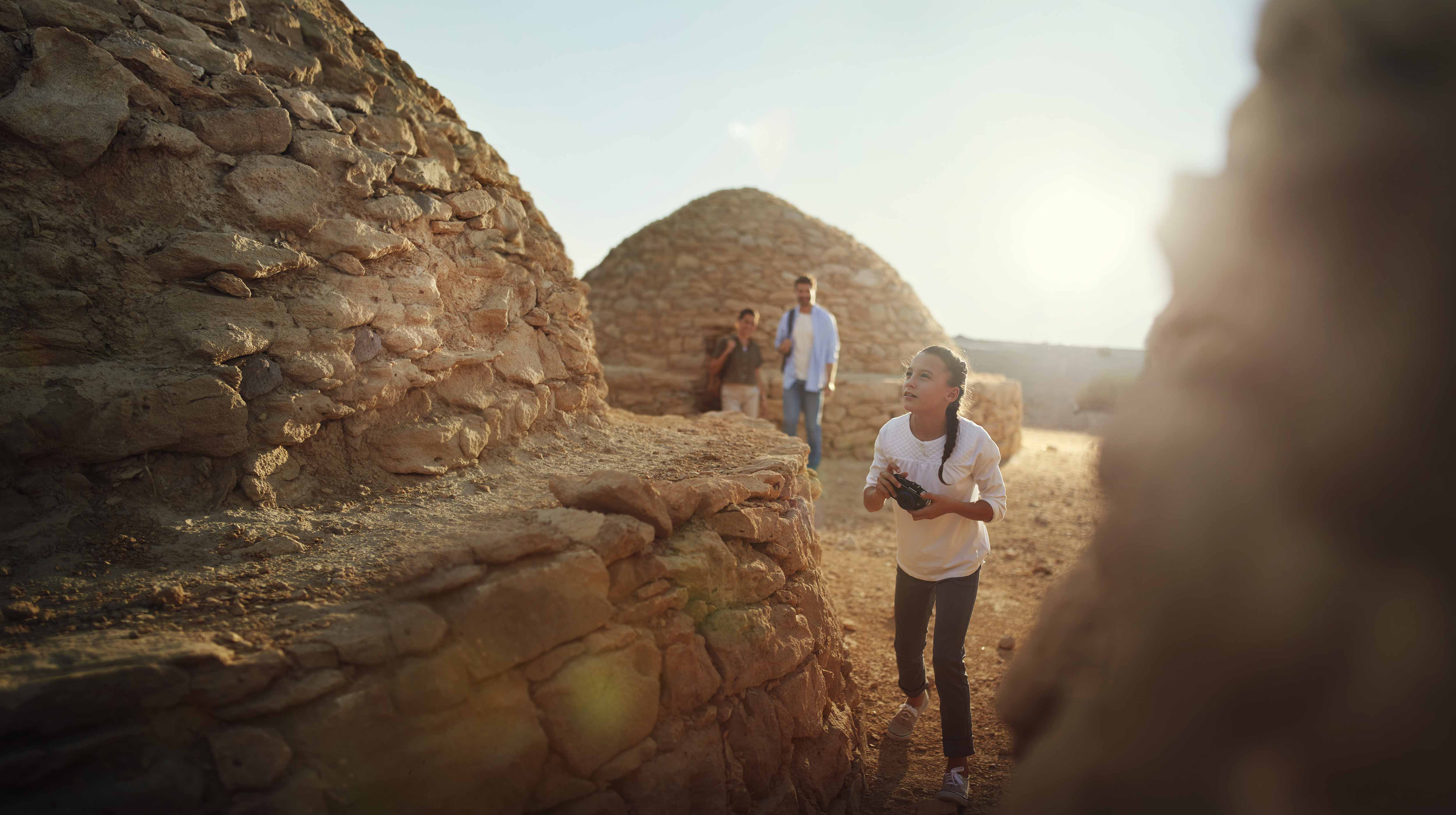See All
Jebel Hafit Tombs
Jebel Hafit, Al Ain
Situated in the foothills of the imposing Jebel Hafit mountain, Abu Dhabi's largest peak, you will find more than 500 ancient tombs, known as the Jebel Hafit Tombs. These 5,000-year-old structures mark the beginning of the Bronze Age in the UAE, with excavations by Danish archaeologists in 1959 finding evidence of ceramic vessels and copper artefacts there, indicating the importance of maritime trade across the Arabian Gulf even then.
The tombs are single-chamber tombs and are made of local,unworked or roughly cut stones. These differ from later Umm an-Nar tombs in the area, which were made from finely worked blocks and contained the remains of hundreds of people. You'll be able to see the incredible Jebel Hafit Tombs on a guided hike through the area, organised by the Jebel Hafit Desert Park. Occupying a nine-kilometre stretch at the base of the craggy Jebel Hafit mountain, visitors can also explore the family-friendly park's majestic natural surroundings on a mountain bike, horse or camel and discover fascinating archaeological and historical remains that tell enchanting stories of this unique area's ancient habitation.
In 2011, UNESCO recognised the Jebel Hafit Desert Park area as being a vital component of the World Heritage Site of Al Ain, the UAE's first World Heritage Site. Jebel Hafit Desert Park not only preserves the area's rich history but also its unique biodiversity, encouraging visitors to experience this dynamic landscape up close and understand how it has changed over millions of years.
For a memorable break that caters to travellers of different tastes, the park offers guests three camping experiences: basic camping for which you need to bring your own equipment (you'll find inexpensive camping gear at several Al Ain and Abu Dhabi city stores); fully serviced camping, including breakfast, in a camp showcasing Bedouin (nomadic Arab people) tents, and; furnished five-star bubble glamping tents complete with air-conditioning.
The significance of the site
In 2011, UNESCO recognised the Jebel Hafit Desert Park as being a vital component of the World Heritage Site of Al Ain, the UAE’s first World Heritage Site.
The park not only preserves the area’s rich history but also its unique biodiversity, encouraging visitors to experience this dynamic landscape up close and understand how it has changed over millions of years.
What you can see
Get up close to the incredible Jebel Hafit Tombs on a guided hike organised by the Jebel Hafit Desert Park.
The tombs are single chambers made of local, unworked or roughly cut stones. These differ from later Umm an-Nar tombs in the area, which was made from finely worked blocks and contained the remains of hundreds of people.
Where you can stay
For a memorable break that caters to travellers of different tastes, the park offers guests three camping experiences:
- Basic camping for which you need to bring your own equipment (you’ll find inexpensive camping gear at several Al Ain and Abu Dhabi city stores)
- Fully serviced camping, including breakfast, in Bedouin-style (nomadic Arab people) tents
- Furnished five-star bubble glamping tents complete with air-conditioning
Around the area
Visitors can also explore the family-friendly Jebel Hafit Desert Park’s majestic natural surroundings on a mountain bike, horse or camel. Discover fascinating archaeological and historical remains that tell enchanting stories of this unique area’s ancient habitation.
Frequently asked questions about Jebel Hafit Tombs
What was the method of burial used in Jebel Hafit tombs?
What is the importance of the Jebel Hafit tombs today?
Nearly 5,000 years later, the Jebel Hafit tombs tell a story of Al Ain's early inhabitants. Ancient artefacts have also been discovered by the tombs, revealing trade paths from the Bronze Age.
